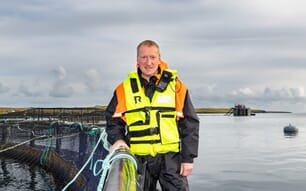Introduction
Optimal handling and storage practices at sea and ashore are essential elements in the management of fish quality and the achievement of maximum return on national and international markets.
Defining fish quality, however, is not easy. The process includes the understanding and assessment of a range of factors, many of which depend on market preferences such as: species, size, capture method, seasonal condition and freshness.
Freshness, describes the degree of spoilage a fish has undergone since capture and is an important indicator for consumers. Very importantly, and unlike many other quality attributes, this is an area within the management of the catch, over which the fishing industry exerts significant control.
Sensory assessment remains the most popular method of assessing freshness. This type of assessment uses smell, texture and visual appearance to determine the quality of fish. It is a particularly useful technique as it is low cost and requires nothing other than careful and exact training. It is a widespread and reliable assessment method and provides the foundation for the design and application of this guide.
Megrim and witch are grouped together, in this guide, as they are premium flatfish in the Spanish and French markets, are similar in shape, are generally caught together and have similar handling requirements (both species are soft and bruise easily).
Premium Megrim & Witch
- Accurate, market-driven size grades;
- Disciplined removal of damaged 'red' fish from all size grades;
- Slushing and packing of the fish for direct transport to the destined market;
- Clear communication to all crew members.
Lepidorhombus whiffiagonis
| Megrim | – English |
| Scoilteán | – Irish |
| Gallo | – Spanish |
| Calimande, limandelle | – French |
| Aeeiro | – Portuguese |
| Smuklica | – Polish |
Megrim is a relatively narrow-bodied, left-eyed flatfish with a moderately large head and large eyes and mouth. They are usually a pale yellow colour with dark or dusky patches. The underside is white.

Glyptocephalus cynoglossus
| Witch | – English |
| Leathóg Bhán | – Irish |
| Mendo | – Spanish |
| Plie cynoglosse | – French |
| Solhao | – Portuguese |
| Szkarlacia | – Polish |
Witch is a relatively narrow, oval-bodied, righteyed flatfish with a small mouth and a very small head. They are usually a uniform brown or grey brown colour, with minute black dots on the body and fins. The fin edges can b+e somewhat darker. The underside is white.

Excellent Quality



Good Quality



Poor Quality



Gutting



Washing



Traditional Boxing & Icing



Hygiene & Cleaning
In addition to correct handling, a high standard of hygiene and cleaning is essential to ensure production of a safe, high quality, seafood product.
- After every haul, the deck, hopper, boxes, gutting area, knives, oilskins, aprons and all other equipment, should be washed down with seawater to remove fish blood, scales, offal, dirt and any other fouling substances.
- At the end of every trip, the deck, fish hold, hoppers, boxes, gutting area, knives, oilskins, aprons and other equipment, should be washed down using a power hose and detergent to remove fish blood, scales, offal, dirt and any other fouling substances.

- A chlorine-based bleach should be used to thoroughly clean working areas and equipment, and inhibit any bacterial growth. To show the importance of this, sample swabs were taken from a hold of a boat where no bleach was used and from a hold of a boat where bleach was used. Under laboratory conditions bacterial growth was greater on the sample swab from the deck where no bleach was used. All residual bleach should be rinsed away with clean seawater.

- Detergents and sanitizing agents should be from the approved list issued by the Sea-Fisheries Protection Authority (SFPA) and should be used to the product specifications.
Onboard Handling
Onboard packing can potentially improve financial returns. This can be achieved through optimising quality by minimising handling and maintaining the cold chain, as fish are packed onboard and are not disturbed until they reach the market. In addition, savings are also made as regrading and repacking on shore are eliminated.
The deck layout should ensure the rapid and efficient washing, strict grading and gutting of megrim/witch. After sorting, gutting and washing, fish are dipped into slush ice to ensure that the core temperature is rapidly reduced to between 0-2ºC. This step minimises the amount of ice that subsequently melts, once packed, which is very important as small wax cartons hold less ice. Slushing gives a two day advantage on shelf life over traditionally iced fish.

Strictly graded fish are carefully packed and iced in small, waxed cartons. Some vessels use plastic or paper sheets on top of the fish to protect from ice burn etc.

Cartons are then weighed and labelled appropriately (common name, scientific name, production method, catch area, size grade, weight and country of origin etc.) to ensure that they are traceable to source.
August 2015




